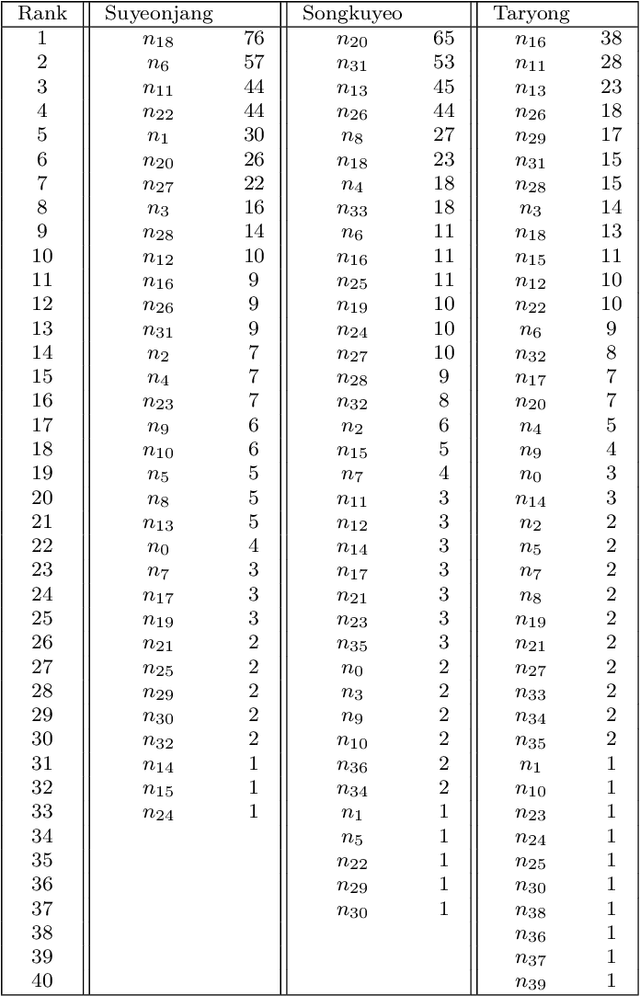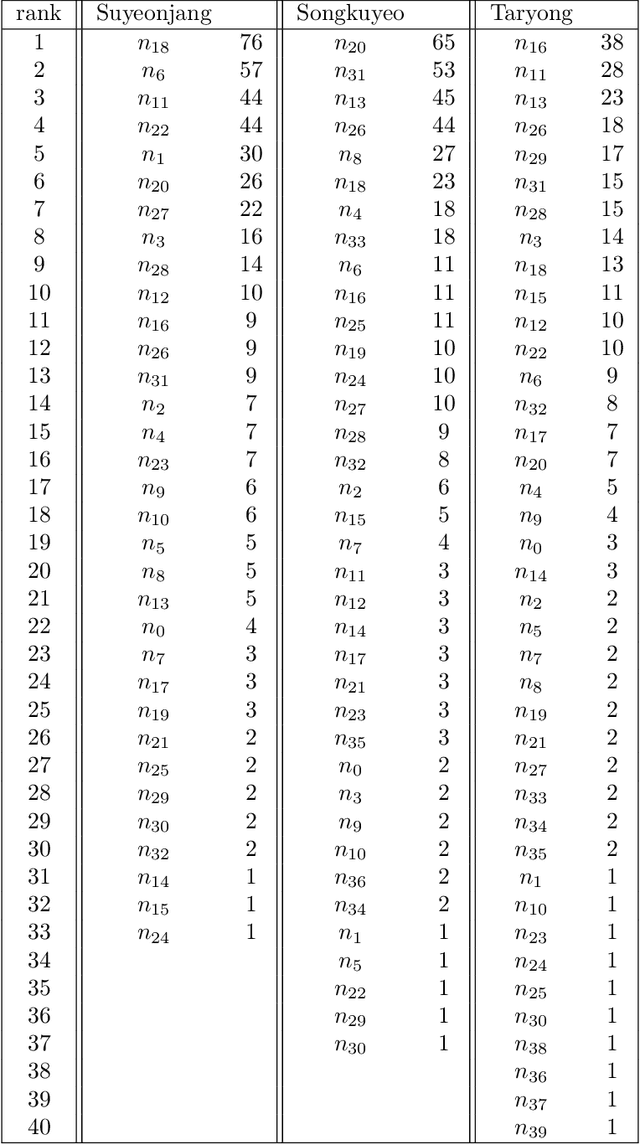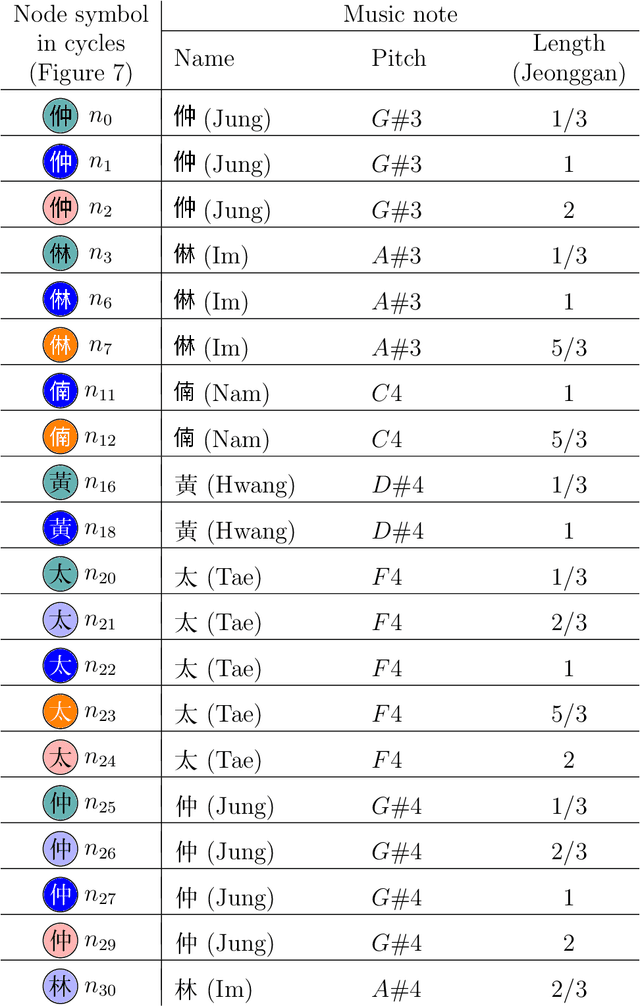Mai Lan Tran
Persistent Homology of Music Network with Three Different Distances
Jun 16, 2025Abstract:Persistent homology has been widely used to discover hidden topological structures in data across various applications, including music data. To apply persistent homology, a distance or metric must be defined between points in a point cloud or between nodes in a graph network. These definitions are not unique and depend on the specific objectives of a given problem. In other words, selecting different metric definitions allows for multiple topological inferences. In this work, we focus on applying persistent homology to music graph with predefined weights. We examine three distinct distance definitions based on edge-wise pathways and demonstrate how these definitions affect persistent barcodes, persistence diagrams, and birth/death edges. We found that there exist inclusion relations in one-dimensional persistent homology reflected on persistence barcode and diagram among these three distance definitions. We verified these findings using real music data.
Machine Composition of Korean Music via Topological Data Analysis and Artificial Neural Network
Mar 29, 2022



Abstract:Common AI music composition algorithms based on artificial neural networks are to train a machine by feeding a large number of music pieces and create artificial neural networks that can produce music similar to the input music data. This approach is a blackbox optimization, that is, the underlying composition algorithm is, in general, not known to users. In this paper, we present a way of machine composition that trains a machine the composition principle embedded in the given music data instead of directly feeding music pieces. We propose this approach by using the concept of {\color{black}{Overlap}} matrix proposed in \cite{TPJ}. In \cite{TPJ}, a type of Korean music, so-called the {\it Dodeuri} music such as Suyeonjangjigok has been analyzed using topological data analysis (TDA), particularly using persistent homology. As the raw music data is not suitable for TDA analysis, the music data is first reconstructed as a graph. The node of the graph is defined as a two-dimensional vector composed of the pitch and duration of each music note. The edge between two nodes is created when those nodes appear consecutively in the music flow. Distance is defined based on the frequency of such appearances. Through TDA on the constructed graph, a unique set of cycles is found for the given music. In \cite{TPJ}, the new concept of the {\it {\color{black}{Overlap}} matrix} has been proposed, which visualizes how those cycles are interconnected over the music flow, in a matrix form. In this paper, we explain how we use the {\color{black}{Overlap}} matrix for machine composition. The {\color{black}{Overlap}} matrix makes it possible to compose a new music piece algorithmically and also provide a seed music towards the desired artificial neural network. In this paper, we use the {\it Dodeuri} music and explain detailed steps.
Topological Data Analysis of Korean Music in Jeongganbo: A Cycle Structure
Mar 11, 2021



Abstract:Jeongganbo is a unique music representation invented by Sejong the Great. Contrary to the western music notation, the pitch of each note is encrypted and the length is visualized directly in a matrix form in Jeongganbo. We use topological data analysis (TDA) to analyze the Korean music written in Jeongganbo for Suyeonjang, Songuyeo, and Taryong, those well-known pieces played at the palace and among noble community. We are particularly interested in the cycle structure. We first define and determine the node elements of each music, characterized uniquely with its pitch and length. Then we transform the music into a graph and define the distance between the nodes as their adjacent occurrence rate. The graph is used as a point cloud whose homological structure is investigated by measuring the hole structure in each dimension. We identify cycles of each music, match those in Jeongganbo, and show how those cycles are interconnected. The main discovery of this work is that the cycles of Suyeonjang and Songuyeo, categorized as a special type of cyclic music known as Dodeuri, frequently overlap each other when appearing in the music while the cycles found in Taryong, which does not belong to Dodeuri class, appear individually.
 Add to Chrome
Add to Chrome Add to Firefox
Add to Firefox Add to Edge
Add to Edge